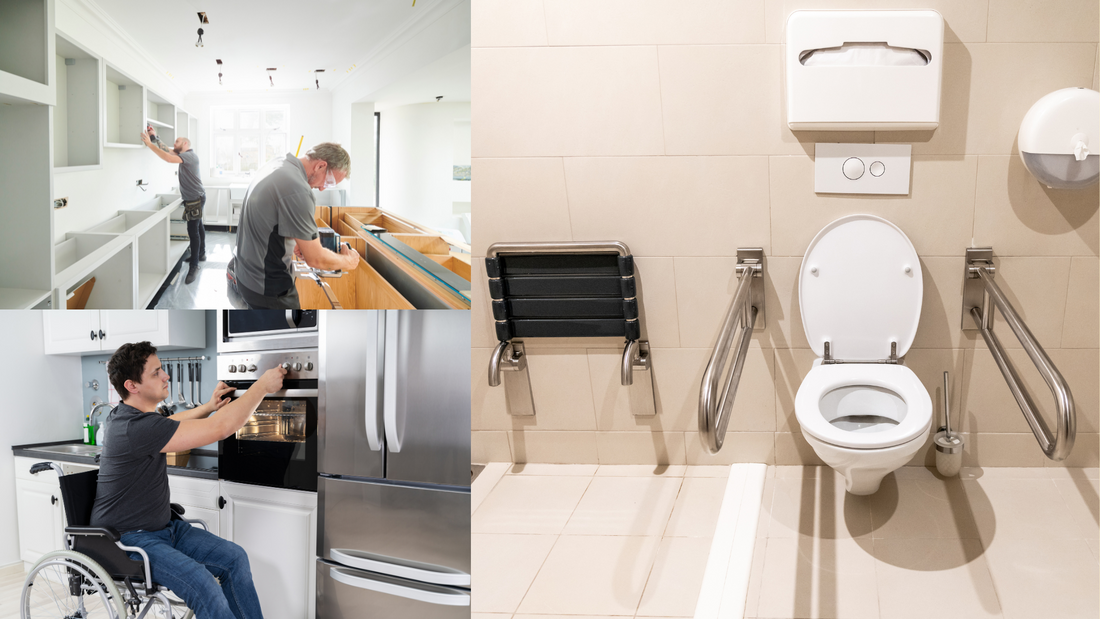
Essential Disability Aids for Home Use: Making Everyday Tasks Easier for Everyone
Living at home should be safe, comfortable, and easy for everyone. For people with disabilities or limited mobility, even small daily tasks can become a challenge. This is where disability aids for home use can help. These tools are designed to make life easier, safer, and more independent.
In this guide, we will explore some of the most useful daily living aids for different areas of the home. You will find ideas to improve comfort, safety, and convenience.
Why Disability Aids Matter
Disability aids are not just for the elderly. People of all ages can benefit from them. These tools help with moving, cooking, cleaning, and personal care. They reduce the risk of falls and make it easier to stay independent.
Even simple changes, like adding a grab bar or using a jar opener, can make a big difference. The goal is to create a home where tasks are easier and safer.
Aids for the Bathroom
The bathroom can be one of the most dangerous places in the home. Slippery floors and hard surfaces can lead to falls. Thankfully, there are several helpful aids:
Grab bars – Install them near the toilet, shower, and bathtub for support.
Shower chairs – Provide a safe place to sit while bathing.
Non-slip mats – Reduce the risk of slipping on wet floors.
Raised toilet seats – Make it easier to sit and stand without strain.
These small changes make the bathroom safer and give people more confidence.
Aids for the Kitchen
The kitchen is a busy space where safety and convenience matter. Some daily living aids can help with cooking and cleaning:
Jar and bottle openers – Make it easier to open tight lids.
Lightweight cookware – Reduce strain on the wrists and arms.
Long-handled tools – Help reach items without bending or stretching.
Automatic can openers – Make opening cans simple and safe.
With these aids, cooking can be enjoyable again instead of stressful.
Mobility Aids for Around the Home
Moving from one room to another should be safe and easy. Mobility aids can help:
Walking sticks or canes – Give extra balance and support.
Rollators (walkers with wheels) – Help with longer walks inside or outside.
Transfer boards – Assist with moving from a wheelchair to a bed or chair.
Portable ramps – Make it easier to move over small steps or door thresholds.
These tools can improve freedom of movement and reduce the risk of falls.

Bedroom Comfort and Safety Aids
A good night’s sleep is important for health and energy. The right aids can make the bedroom more comfortable:
Bed rails – Provide support when getting in and out of bed.
Overbed tables – Perfect for meals, reading, or using a laptop in bed.
Adjustable beds – Allow for better sleeping positions and comfort.
Bed risers – Raise the height of the bed to make standing easier.
These aids can help with both safety and relaxation.
Aids for Personal Care
Taking care of personal hygiene is important for dignity and health. Personal care aids can make tasks easier:
Long-handled brushes and sponges – Help with bathing hard-to-reach areas.
Easy-grip hairbrushes – Comfortable for people with limited hand strength.
Button hooks and zipper pulls – Make dressing easier for people with reduced hand movement.
Electric toothbrushes – Provide effective cleaning with less effort.
These tools can help maintain independence in daily routines.
Communication and Technology Aids
Technology can make life easier and more connected:
Voice-activated assistants – Control lights, music, and reminders using your voice.
Large-button phones – Easier to see and use.
Video doorbells – Allow safe communication without opening the door.
Medication reminders – Alert you when it’s time to take medicine.
These aids improve safety, independence, and peace of mind.
Choosing the Right Aids for Your Needs
Before buying any disability aid, think about your needs. Ask yourself:
What tasks are the most difficult?
Which rooms need the most safety improvements?
Do you need portable aids for travel?
Talking to a healthcare professional or occupational therapist can help you choose the best tools for your situation.

Final Tips for a Safer and Easier Home
Keep walkways clear to avoid trips.
Use good lighting in all rooms.
Store items within easy reach.
Regularly check aids to make sure they are in good condition.
Small changes can have a big impact on comfort and safety.
Conclusion
The right home accessibility products for daily use can transform everyday life. From the bathroom to the kitchen, these daily living aids help make tasks simpler, safer, and more comfortable. Whether it’s a grab bar, a shower chair, or a voice-controlled assistant, each tool supports independence and peace of mind.
For more information, follow my Pinterest page.
FAQs – Disability Aids for Home Use
1. What are disability aids for home use?
Disability aids for home use are tools or devices that make daily tasks easier for people with disabilities or mobility issues. They help with safety, comfort, and independence in the home.
2. Who can benefit from daily living aids?
Daily living aids are useful for people of all ages. They are especially helpful for those with disabilities, injuries, or age-related mobility problems.
3. Which are the most important disability aids for the bathroom?
Some useful bathroom aids include grab bars, shower chairs, non-slip mats, and raised toilet seats. These help reduce the risk of falls and make bathing easier.
4. How do I choose the right daily living aids for my home?
First, think about which tasks are the most difficult for you. Then, choose aids that can make those tasks easier and safer. You can also ask a healthcare professional for advice.
5. Where can I buy quality disability aids for home use?
You can buy daily living aids from medical supply stores or trusted online shops like Little Wins, which offers products to make everyday life easier.